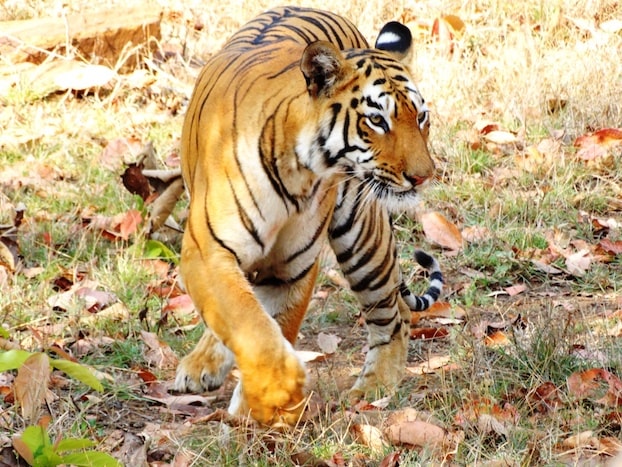Bangladesh may soon witness a new kind of “infiltration” across its eastern border-not by people, but by Royal Bengal Tigers from the Indian Sunderbans. As the big cat population in West Bengal’s mangrove delta edges close to its ecological capacity, forest officials warn that a spillover into Bangladesh is imminent.
The fifth cycle of India’s Tiger Census, conducted in 2022 and unveiled by Prime Minister Narendra Modi in April, confirmed a milestone: the Royal Bengal Tiger population in the Indian Sunderbans crossed the three-digit mark for the first time. Currently, 101 tigers are estimated to inhabit the 1,895 sq km biosphere reserve and its adjoining areas.
With a density of 4.27 tigers per 100 sq km, up from 3.6 in 2018, the region is fast approaching its estimated maximum carrying capacity of 4.68 per 100 sq km. Wildlife officials now believe the Sunderbans is saturated, setting the stage for young adult tigers to migrate eastwardstowards Bangladesh’s larger stretch of mangroves.
Creeks, rivers could serve as wildlife corridors
“Human settlements in the north and west of Sajnekhali and Basirhat ranges leave the tigers with only one direction to go-east, across the creeks and rivers into Bangladesh,” explained a senior forest official.
The Bangladesh part of the Sunderbans accounts for more than 60% of the total mangrove area of the delta and has 16% more forest cover compared to its Indian counterpart, making it a natural destination for dispersing tigers.

Bangladesh’s sunderbans: A paradox of potential and poaching
Bangladesh’s last tiger census in 2018 counted 114 tigers in its mangrove zones. Despite having a higher forest spread, the population hasn’t grown proportionally-largely due to increased poaching activities, particularly targeting deer and tigers.
“The Bangladesh mangroves are ecologically more conducive for tigers,” noted another Indian forest official, adding, “But illegal hunting continues to suppress the population. A coordinated strategy between India and Bangladesh could allow for planned transboundary relocation of tigers from oversaturated areas.”
WII report highlights surge in human-tiger conflict
The Wildlife Institute of India (WII) has issued a preliminary report to West Bengal’s forest department, highlighting a concerning uptick in human-wildlife conflict in the Sunderbans.
According to WII data, several blocks in the reserve have already exceeded the viable tiger density of 3–5 per 100 sq km, prompting adult and weaker tigers to seek newer, less competitive territories.
Since December 2024, 11 tigers have strayed into villages, and while all were captured and released, it underlines the growing pressure within the forest. WII has advised that future captures be released in lesser-populated compartments like Chamta forest block in the National Park East range.


